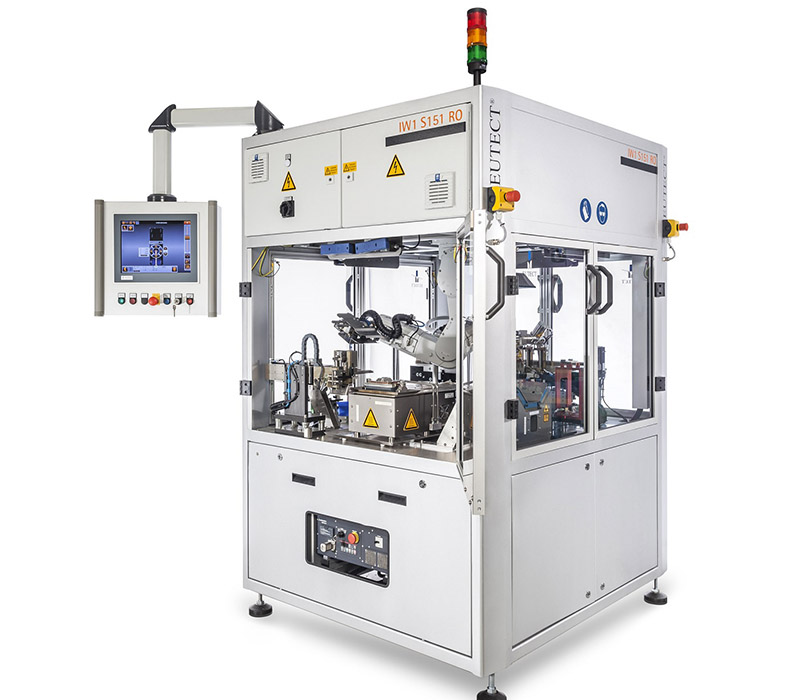Fully automated robotic soldering celebrates its tenth anniversary
In 2008, family company Eutect took the first step into robotic automation. A flexible, efficient, rapid soldering process is on the investment list at many electronics manufacturers, which is why the demand for fully automatic robotic soldering systems is increasing for mini-wave soldering.
Matthias Fehrenbach, Managing Director of Eutect stated: "In 2008, we equipped our first machine cell with a kink-arm robot. It was more of a gimmick, because we wanted to know and understand what's possible in the field of component soldering with this technology.”
The kink-arm robot has become increasingly successful, because the product direction chosen developed into a success story within ten years. This is especially clear in the IW1 S151 RO. A table system with a 1.5x1.3m footprint is involved here. The machine is equipped with flux and pre-heat modules as well as mini-waves.
A six-axis robot, which is mounted either on the cell floor or on the cover, transports each assembly within the machine from process step to process step. The IW1 S151 RO can be used as both an in-line and as a standalone solution.
Fehrenbach explained: "A compact production cell has a smaller footprint, leaving more space for further tasks around the process. However, that also means that we have to act in a manner as flexible and space saving as possible within the cell's scant space. We can manage this only with a six-axis robot, which supplies different modules within the machine."
The freely selectable process module arrangement within the system is decisive here. Through direct agreement with the customers and users, process modules such as flux application, preheating and soldering modules can be positioned so as to minimise transport routes within the machine. At the same time, care must be taken to ensure that all modules are optimally accessible for service and maintenance. Doing so reduces system downtime, and material and space costs as well as personnel expenses.
Many opportunities to work within the machine cell result thanks to the six-arm robot. The associated product grippers, which expand the possibility radius and maximise the use of spaces and processes, complement this flexibility. Up to four different gripper/solder-mask combinations can be stored in a system and tooled fully automatically, which enables a large number of product variants to be processed.
However, these workpiece carriers' masses and dimensions aren't optimal for compact six-axis robots. A six kilogramme mass was often exceeded, rendering the workpiece carriers too heavy for compact robotic systems. The company has developed its own workpiece carrier concept as a result.

These workpiece carrier combinations enable the robot to grab an attachable, product specific satellite carrier directly from the belt or from an input position and transport it from there to the individual processes. The satellite carrier can also be equipped with various functions such as placement queries, coding, special titanium masks, and many other functions for secure processing, in each case in relation to the product. After process completion, the carrier is dropped onto the conventional workpiece carrier again.
"We always manufacture our satellite carriers in lightweight construction, because doing so enables us to integrate smaller robots with lighter payloads. This allows us to save costs and space for our customers", continued Fehrenbach. “The satellite carriers can be easily and quickly converted during a product or variant change. This enables complete workpiece carriers as well as buffer or workpiece carrier storage to be avoided for each product variant.
"Additional spare part storage and further investment costs likewise become obsolete. 'Meanwhile we've been selling a variety of cells with the axis robot integrated head first. Thus for instance, the IW1 S151 or S211 RO can be equipped with powerful preheating and cooling modules as well as brush modules at the end of the process.
"The overhead hanging robot provides us with enough space to integrate further modules, with the guarantee that the robot can always access them. Due to this variety of combinations, we can offer our customers unique, individual soldering processes the efficiency and speed of which ultimately provide the former with great benefits.”







